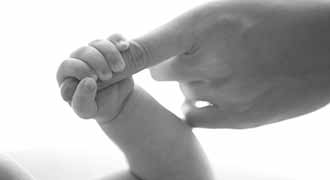
Cerebral palsy is a broad term used to describe a group of chronic disorders that impair control of movement. This usually occurs when a child’s developing brain is damaged. Cerebral palsy usually develops when a child turns 2 or 3 years. About 10,000 infants in the United States are diagnosed with this condition and about 1,500 preschoolers nationwide are recognized as having it each year. An estimated 764,000 Americans have CP and between 35 percent to 50 percent of all children who have cerebral palsy will also experience an accompanying seizure disorder and same level of mental retardation. They may also have learning disabilities related to vision, hearing, speech and language.
Common Causes of Cerebral Palsy
 Only 2 percent of cerebral palsy cases develop as a result of a genetic issue. The remaining cases develop due to preventable factors before, during or after the baby’s birth. Here are some of the most common causes of cerebral palsy:
Only 2 percent of cerebral palsy cases develop as a result of a genetic issue. The remaining cases develop due to preventable factors before, during or after the baby’s birth. Here are some of the most common causes of cerebral palsy:
Infections: Maternal infections during pregnancy that may cause serious harm to the developing fetus’s nervous system commonly cause cerebral palsy. Examples of these dangerous infections include measles, cytomegalovirus, which a herpes-type virus, and toxoplasmosis, an infection caused by a parasite that can be carried in cat feces or inadequately cooked meat. These and other types of infections in pregnant women that go undiagnosed and untreated may cause developmental brain damage in fetuses.
Jaundice: Among newborns, jaundice is caused by excessive bilirubin in the blood. While bilirubin is normally filtered out by the liver, newborns’ livers need a few days to start doing this effectively. Newborns who have this condition are treated with phototherapy, which helps clear up the jaundice. However, if this condition is left untreated, the jaundice may damage brain cells.
Blood conditions: When there is severe Rh incompatibility between mother and infant, it may lead to a form of jaundice in the newborn that may cause brain damage. In this scenario, the mother’s body produces antibodies that destroy the fetus’s blood cells.
Oxygen deprivation: This is most common cause of severe and irreversible brain damage among infants. When a fetus or newborn doesn’t receive enough oxygen, the brain cannot develop and permanent damage quickly begins to occur. This condition where the baby does not receive enough oxygen is known as hypoxia. It is responsible for about 10 percent of cerebral palsy diagnoses.
Risk factors: Some of the risk factors that increase the probability that a child will later be diagnosed with cerebral palsy include breech births; vascular or respiratory problems at birth; physical defects or malformations; low Apgar score at birth that determines the newborn’s physical health; low birth weight; premature birth; and seizures shortly after birth.
Cerebral Palsy and Medical Malpractice
 Many of these circumstances and events can be prevented with proper fetal care and monitoring. If a doctor fails to properly monitor the mother and child and fails to provide treatment and care in a timely manner resulting in cerebral palsy in the child, then, he or she as well as the medical facility can be held liable for medical negligence.
Many of these circumstances and events can be prevented with proper fetal care and monitoring. If a doctor fails to properly monitor the mother and child and fails to provide treatment and care in a timely manner resulting in cerebral palsy in the child, then, he or she as well as the medical facility can be held liable for medical negligence.
Children with cerebral palsy and their families are looking at a lifetime of medical costs. This may add up to millions of dollars during a child’s lifetime. If you believe that your child’s cerebral palsy was caused by medical negligence, please contact an experienced Rhode Island cerebral palsy lawyer who can help you secure the best lifetime care for your child.


